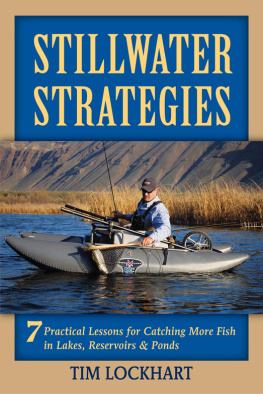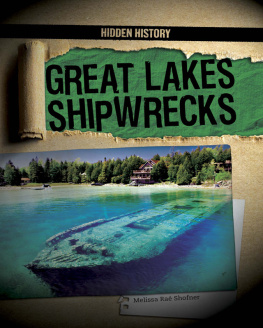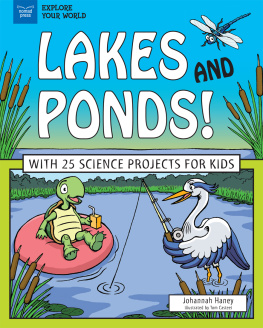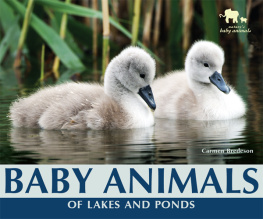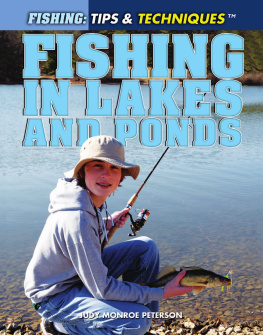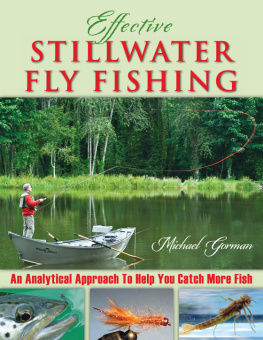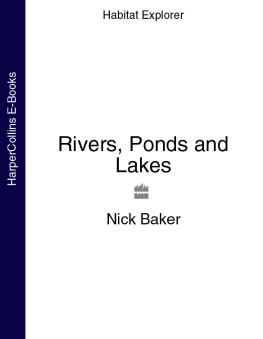Copyright 2013 by Tim Lockhart
Published by
STACKPOLE BOOKS
5067 Ritter Road
Mechanicsburg, PA 17055
www.stackpolebooks.com
All rights reserved, including the right to reproduce this book or portions thereof in any form or by any means, electronic or mechanical, including photocopying, recording, or by any information storage and retrieval system, without permission in writing from the publisher. All inquiries should be addressed to Stackpole Books, 5067 Ritter Road, Mechanicsburg, Pennsylvania 17055.
Printed in the United States
First edition
10 9 8 7 6 5 4 3 2 1
Library of Congress Cataloging-in-Publication Data
Lockhart, Tim.
Stillwater strategies : 7 practical lessons for catching more fish in lakes, reservoirs, and ponds / Tim Lockhart. First edition.
pages cm
Includes index.
ISBN 978-0-8117-1137-1 (pbk.)
eISBN 978-0-8117-4997-8
1. Trout fishing. 2. Fly fishing. I. Title.
SH687.L56 2013
799.1757dc23
2012026431
In memory of Don Ward, Nish Samoulian,
and other anglers forever missed on the water
Acknowledgments
F irst I would like to thank Jay Nichols at Stackpole Books for giving me a shot as a new author. Jays guidance and editing talent made this book possible, and I am grateful for everything I learned from him along the way.
Next Id like to thank Christian Brewer, who convinced me to do this. Christian saw the potential well before I did and has been a major source of help and advice throughout.
Thanks also to Roy Spradlin for a lot of inspiration and ideas shared on the water. For much of the time spent gaining the experience behind this book, Roy was the guy fishing next to me.
Many thanks to Corky Johnson, who gave me my first fly rod and a swift kick in this direction.
Special thanks to my brother, Jeff, for his great enthusiasm and support. Jeff has always been there for me.
Introduction
W hen it comes to lake fishing, any fly fisher can show up during prime conditions and catch trout left and right. An abundant hatch, ideal temperatures, and minimal angling pressure would be nice every time outif only our sport worked that way. Yet, on a whim, the sport can show a rather difficult and more realistic side, leaving you and me with more questions than answers. Trout react to a wide variation in conditions, and the angler must commit to understanding the countless factors that influence when and where activity will occur.
This book was written to guide you through the entire process of stillwater fly fishingfirst by identifying what matters and then by prioritizing all the elements in order of relevance. In presenting the material this way, I am calling attention to the adverse impact of focusing on only part of the equation, or of placing too much emphasis on the wrong priorities. Conversely, Im also trying to emphasize the significant benefits of assembling the puzzle pieces in meaningful and logical order every time out. More importantly, when you hit one of those difficult days, youll be ready with a game planand the confidence to keep finding and catching fish.
This book also teaches and encourages open-mindedness and creative thought, encouraging a freedom that goes a long way in the complex and often chaotic stillwater environment. My hope is that you will walk away with a very useful set of tools for solving any puzzle that may present itself, and that the book will remain a solid reference as time goes on.
As fly fishers, weve been wired to think our chosen nymph, streamer, or Chironomid pattern is the soleor most importantfactor for whatever happens on the water. Id love to tell you thats all there is to it. But while fly selection can be an important part of the game, successful angling on lakes requires a whole lot more. In this book, I identify what really matters when pursuing trout in stillwater.
, I talk about how to locate trout in a lake by focusing on the various factors that influence their activity. Of all of the skills you can bring to an outing, your ability to determine WHEN and WHERE fish are likely to be active will be the most important by far. In fact, that skill is the essential focus of this book.
Once you learn how to select a good lake and figure out where the fish are, youll need a few tricks up your sleeve to outsmart them. provides exactly thatintroducing you to a number of productive ways to present your fly. Well talk about how to draw strikes in a variety of different circumstances, as well as the most effective ways to land your fish once hooked.
describes how to dissect a lake to identify characteristics relevant to successful fly fishing. I pick apart the elements of my example lake piece by pieceand explain how you can develop the same in-depth knowledge for any body of stillwater. A comprehensive familiarity with at least one location will get you more fish and result in a better angling education than anything else could. Its the fly fishers version of home-field advantage.
After that, youll be ready to go out, get wet, and put it all into practice.
, Anatomy of an Outing, walks you through an entire day on the water, explaining every decision and its outcome in detail. This lesson is based on an actual fly-fishing experience and brings to life a lot of the material presented to this point.
Finally, review two opposing scenarios common in stillwater fly fishing: slow days and very active days. I discuss ways to get the best results under either circumstance, as well as identify some of the pitfalls to avoid. Well also see what a best-case outing should look like in each situation.
Throughout the book, after first discussing the various concepts and principles, I illustrate how they would apply in a variety of scenarios. I talk about the different ways that both success and failure can be determined in a single dayand the degree to which certain decisions can directly impact your results. By the end of the book, you should have a good working knowledge of the nature of trout, how each of a long list of factors affects trout behavior, and ultimately WHEN and WHERE trout can be found.
Remember: In successful fly fishing, you are only one-half of the equation; the trout is the other half.
In addition to knowing what affects your targets whereabouts, you should also have proficiency in observation, interpretation, decision making, execution, time management, and other skills that help you to determine both the elements of your pursuit and which tools to employ.
While most of my experience in stillwater fly fishing comes from the US Pacific Northwest, which has its own unique set of conditions, I believe most of the techniques in this book will hold true across the country or abroad. Fly fishers use a wide variety of techniques and face varying circumstances worldwide; however, the same principles apply in terms of trout behavior, effective search methods, and prioritizing elements of the approach.
If you learn only one thing from this book, understand that your fly selection is the last priority, behind all the factors that determine whether that fly gets in front of a fish or not. Put simply, the most brilliantly tied fly will get you nothing if presented in empty water; however, most anything in your box will draw strike after strike when presented skillfully in plain view of active trout. Successful lake angling means you have to look beyond the fly. Well beyond it.
After reading this book, your obvious next step will be to get out there and put these ideas into practice. In terms of learning, I compare fly fishing to playing a musical instrument: Good instruction is essential, but your progress is more a function of the time spent practicing, failing, and working through frustrations along the way. Even if you consider yourself a new or less experienced fly fisher, with time and patience you will find yourself getting it right and growing in confidence, little by little. This sport is for everyone who wants to pursue it, and I have yet to meet a good fly fisher who regrets having put in the work to succeed.

